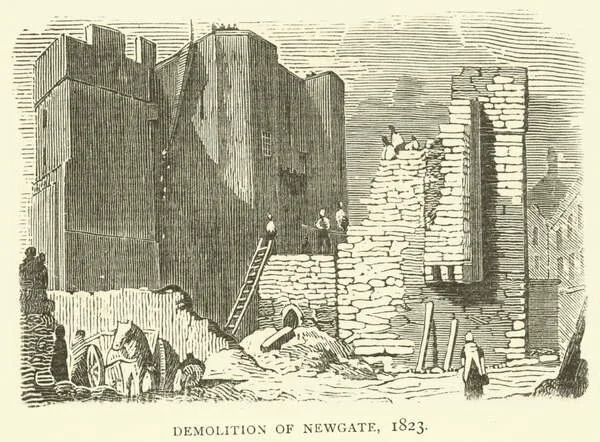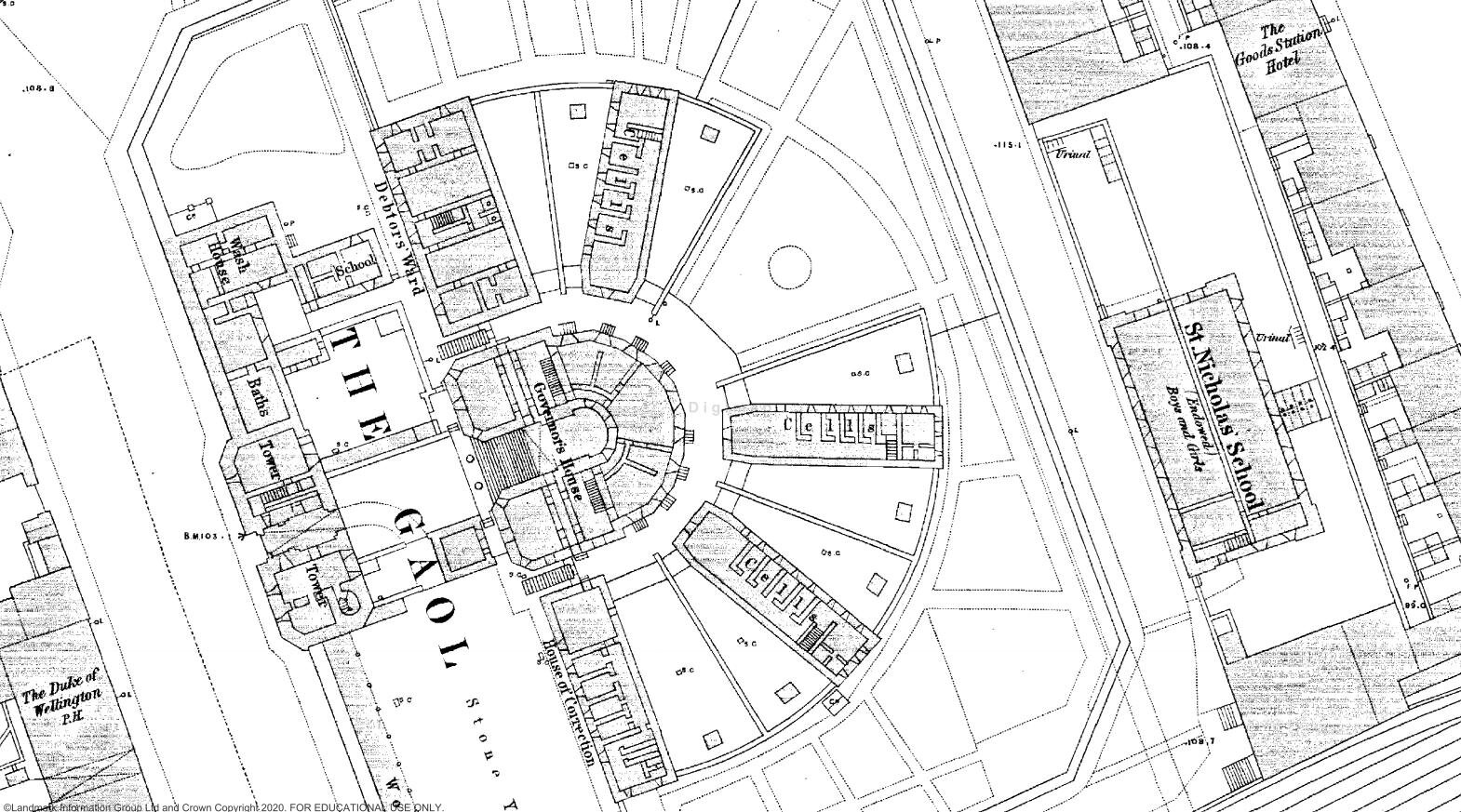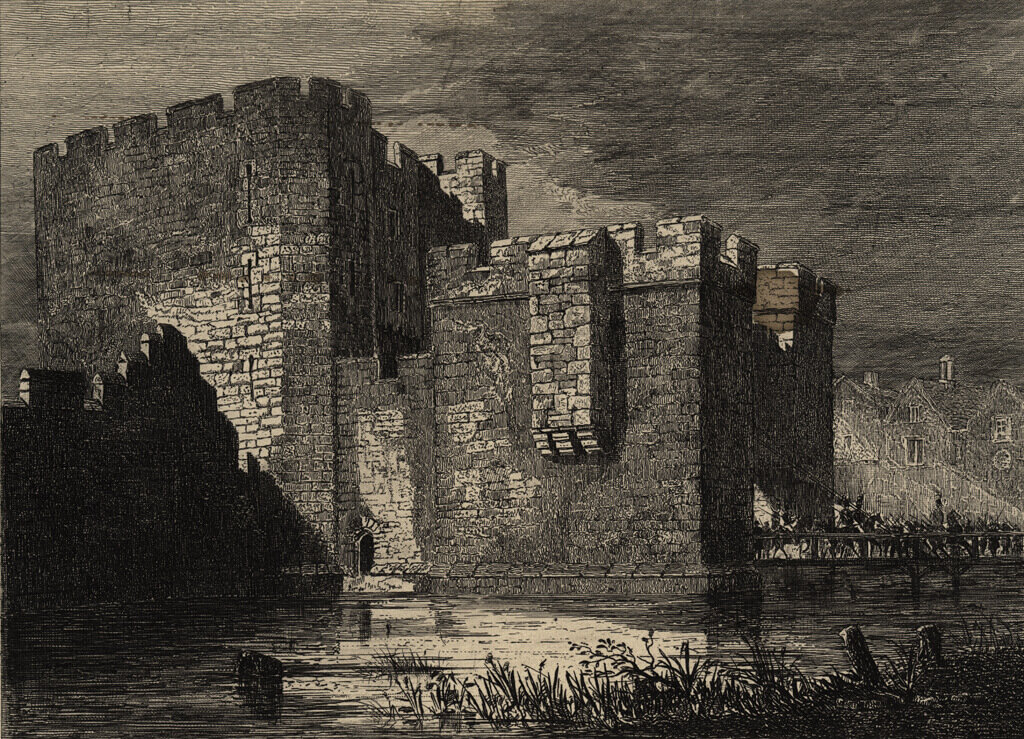
Prison History
Pre Gaol
Newgate was Newcastle’s medieval prison, built over the North-west gate on the town walls. It was sited on what is Newgate Street today and faced a moat where Barras Bridge crossed Pandon Dene. The gaol comprised around 10 small rooms about 14 feet square each. Felons were confined six to a room and were manacled due to the insecurity of the gaol. Debtors were permitted to use a common kitchen and walk on the leads or the roof of the prison. In 1813 there were 41 debtors crammed into these quarters at the same time.
There had long been a concern among the town’s authorities that Newgate was not fit for purpose and was a school for criminals. The key problem, it seemed, was that prisoners of all genders, ages, and types of crime mingled and communicated with each other, retarding any efforts at reform or learning. As a newspaper editorial of 1822 put it: “The young and the simple departed from their cells initiated in all the artifice and trickery of accomplished villainy, and, in many instances, the petty pick pocket soon returned to the scene of his instructors in the more important character of a highway-man or a house-breaker”.
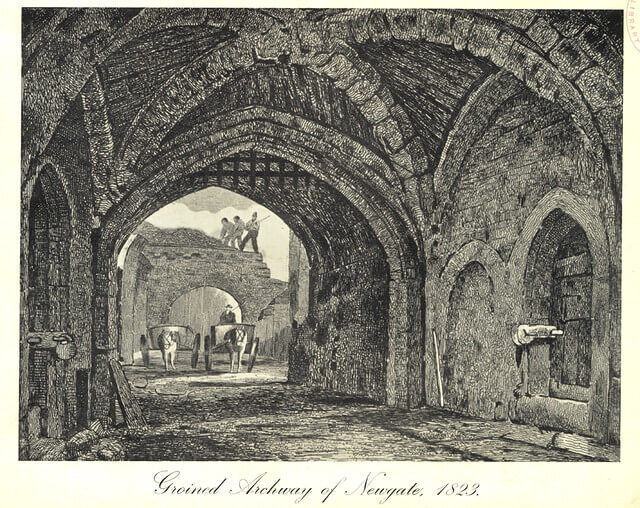
“The young and the simple departed from their cells initiated in all the artifice and trickery of accomplished villainy.”
- Tyne Mercury, 29 October 1822.
Given the proximity to the town’s outer limits, it was very tempting to try to escape from Newgate and make for the fields beyond Gallowgate, and indeed in 1800 three prisoners did escape by making a hole in the chimney of their cell, climbing to the roof, and descending by a rope made from their bed clothes. However, a fourth prisoner, of a more corpulent build, became stuck up the chimney and could not get down or up until he was assisted by the warders. Any felons who died in Newgate, or were executed on the Town Moor, were buried on the north side of the churchyard of nearby St. Andrew’s. When Gallowgate was widened in the 1890s and this site was dug up, local antiquarians discovered corroded iron fetters amid the human remains.
Across Britain and Ireland local authorities, magistrates, politicians, and philosophers were increasingly concerned with reforming as well as punishing offenders. The great reform movement in prisons centred on the “classification system” whereby prisoners were to be physically separated according to type - women, children, debtors, male offenders, and serious offenders. Inmates would sleep in single cells that were elevated in the building and they would have minimal contact with other inmates. In design terms, prisons were being planned with a central set of buildings observing radial wings that could be controlled and separated from the whole if need be. An extreme version of this philosophy was the “Panopticon”, a system of controlling institutions via surveillance first developed by the liberal theorist Jeremy Bentham.
Following an Act of Parliament in 1822, authorities in Newcastle were given the green light to build a new gaol that could provide a modern and reform-minded prison. This was in line with the vision of Newcastle’s active town councillors in the 1820s and 30s, who were bankrolling ambitious building schemes such as Moot Hall, Leazes Terrace, and the developments that became known as Grainger Town. Newgate was in such a state that it was demolished in 1823 before the replacement had been built, much to the consternation of the antiquarians who penned a comic petition for its survival. While Newcastle’s criminals and debtors were temporarily housed in the basement of the Moot Hall and dungeon of Castle Garth, the innovative plans of John Dobson (1787-1865), Newcastle’s stellar architect, were accepted by the Gaol Committee.
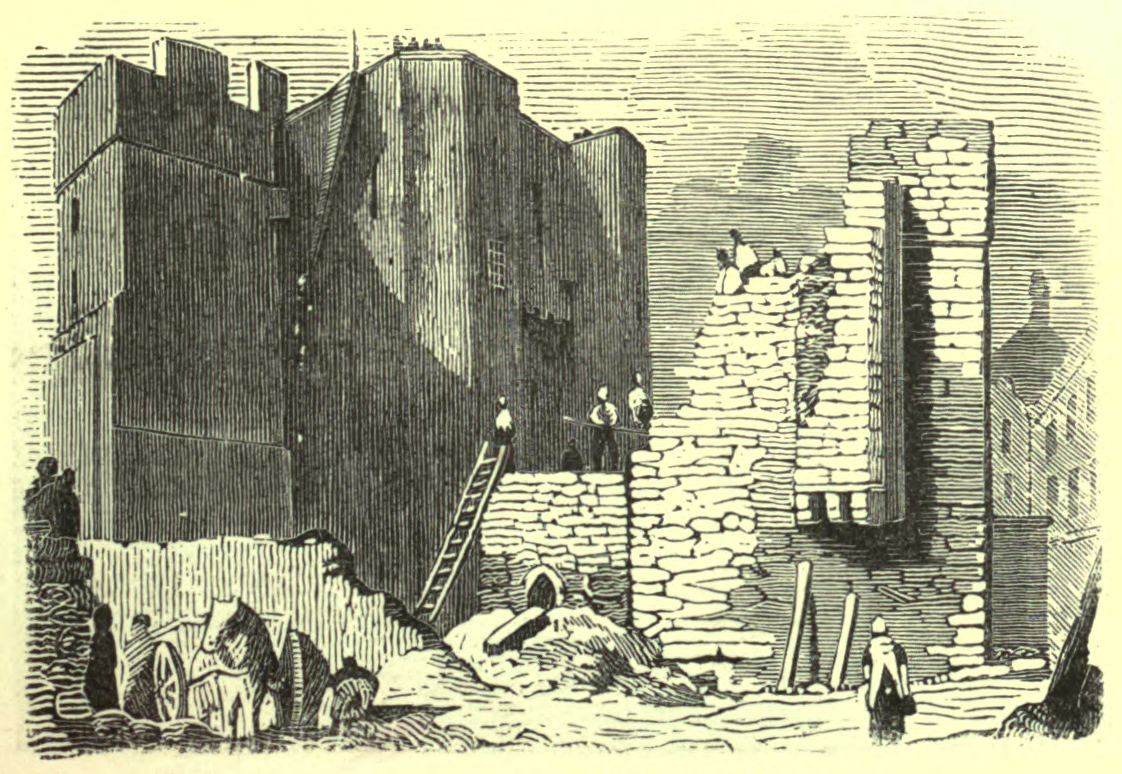
A vigorous, but unsuccessful effort was now made by the lovers of antiquity, to save this venerable monument…but…it also fell sacrifice to the improving spirit of the age.
- Eneas Mackenzie on the demolition of Newgate 1823.
Timeline
